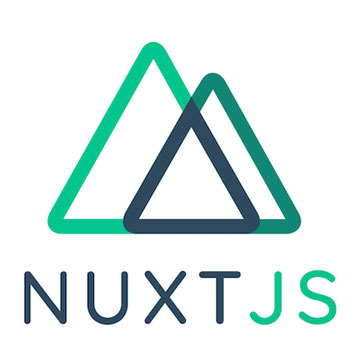In the realm of web and mobile application development, React has emerged as a leading technology choice for businesses seeking to create modern, dynamic, and user-friendly applications. However, the React ecosystem extends beyond the core library, with frameworks like Next.js, Nest.js, Nuxt.js, and React Native offering specialized tools and capabilities for building web and mobile applications.
Next.js: Empowering Web Applications with React
Next.js is a versatile React framework that enables developers to build server-rendered React applications with ease. It offers a comprehensive solution for building dynamic web applications, static sites, and progressive web apps (PWAs), with built-in support for server-side rendering (SSR), static site generation (SSG), and client-side routing.
Key Features of Next.js
Server-Side Rendering (SSR): Next.js allows developers to render React components on the server, delivering fully rendered HTML to the client. This improves performance, SEO, and user experience by ensuring fast page loads and accessibility for users with JavaScript disabled.
Static Site Generation (SSG): Next.js supports static site generation, enabling developers to pre-render entire pages at build time and serve them as static HTML files. This approach is ideal for content-heavy websites, blogs, and marketing pages, as it improves performance and reduces server load.
Client-Side Routing: Next.js provides a powerful routing system that enables seamless navigation between pages without full page reloads. This enhances the user experience by providing fast and responsive navigation in single-page applications (SPAs) and PWAs.
Business Prospects of Next.js
- Improved Performance and SEO: Next.js' support for SSR and SSG improves performance and SEO by delivering fully rendered HTML to the client and ensuring fast page loads.
- Enhanced User Experience: Next.js' client-side routing and seamless navigation enhance the user experience by providing fast and responsive navigation in web applications.
- Faster Development Time: Next.js' built-in features and conventions streamline development and reduce time-to-market, allowing businesses to launch new products and features more quickly.
- Scalability and Flexibility: Next.js' modular architecture and support for modern JavaScript features make it well-suited for building scalable and flexible web applications that can grow with the needs of the business.
Nest.js: Building Scalable Backend Applications with React
Nest.js is a progressive Node.js framework for building efficient, reliable, and scalable server-side applications. It leverages TypeScript and follows architectural patterns inspired by Angular, providing developers with a robust and modular framework for building backend applications with React on the frontend.
Key Features of Nest.js
Modular Architecture: Nest.js follows a modular architecture that encourages code organization, reusability, and scalability. It provides built-in support for features such as modules, controllers, services, and middleware, making it easy to build complex backend applications.
Dependency Injection: Nest.js' dependency injection system allows developers to define dependencies between components in a clear and modular way. This promotes code reusability, testability, and maintainability, making it easier to build and maintain complex server-side applications.
Type Safety: Nest.js leverages TypeScript to provide type safety and catch errors at compile time. This improves code quality, readability, and maintainability, reducing the risk of runtime errors and improving developer productivity.
GraphQL Integration: Nest.js provides built-in support for integrating with GraphQL, a query language for APIs. This allows developers to build efficient and flexible APIs that can fetch data from multiple sources and deliver it to clients in a structured and predictable way.
Business Prospects of Nest.js
- Scalability and Reliability: Nest.js' modular architecture and dependency injection system make it well-suited for building scalable and reliable backend applications that can handle large volumes of traffic and data.
- Type Safety and Code Quality: Nest.js' integration with TypeScript provides type safety and catch errors at compile time, improving code quality, readability, and maintainability.
- GraphQL Support: Nest.js' built-in support for GraphQL allows businesses to build efficient and flexible APIs that can fetch data from multiple sources and deliver it to clients in a structured and predictable way.
Nuxt.js: Accelerating Web Development with React
Nuxt.js is a progressive Vue.js framework for building modern web applications with React on the frontend. It provides a powerful and flexible platform for building server-side rendered (SSR) applications, static sites, and single-page applications (SPAs), with built-in support for features such as server-side rendering (SSR), static site generation (SSG), and client-side routing.
Key Features of Nuxt.js
Server-Side Rendering (SSR): Nuxt.js allows developers to render React components on the server, delivering fully rendered HTML to the client. This improves performance, SEO, and user experience by ensuring fast page loads and accessibility for users with JavaScript disabled.
Static Site Generation (SSG): Nuxt.js supports static site generation, enabling developers to pre-render entire pages at build time and serve them as static HTML files. This approach is ideal for content-heavy websites, blogs, and marketing pages, as it improves performance and reduces server load.
Client-Side Routing: Nuxt.js provides a powerful routing system that enables seamless navigation between pages without full page reloads. This enhances the user experience by providing fast and responsive navigation in single-page applications (SPAs) and progressive web apps (PWAs).
Business Prospects of Nuxt.js
- Improved Performance and SEO: Nuxt.js' support for SSR and SSG improves performance and SEO by delivering fully rendered HTML to the client and ensuring fast page loads.
- Enhanced User Experience: Nuxt.js' client-side routing and seamless navigation enhance the user experience by providing fast and responsive navigation in web applications.
- Scalability and Flexibility: Nuxt.js' built-in features and conventions streamline development and reduce time-to-market, allowing businesses to launch new products and features more quickly.
React Native: Bridging Mobile and Web Development
React Native is a popular framework for building cross-platform mobile applications with React. It allows developers to use React and JavaScript to build native mobile apps for iOS and Android, with a single codebase. React Native provides a rich set of components and APIs for building native user interfaces, accessing device features, and integrating with platform-specific functionality.
Key Features of React Native
Cross-Platform Development: React Native enables developers to build cross-platform mobile applications with a single codebase, reducing development time and effort. This allows businesses to reach a wider audience by targeting both iOS and Android platforms with the same application.
Native Performance: React Native leverages native platform components and APIs to deliver native performance and user experience on iOS and Android devices. This ensures that mobile applications built with React Native are fast, responsive, and reliable, even on low-end devices.
Hot Reloading: React Native supports hot reloading, allowing developers to make changes to code and see the results instantly without recompiling the entire application. This speeds up the development process and improves developer productivity.
Business Prospects of React Native
- Cross-Platform Development: React Native allows businesses to build cross-platform mobile applications with a single codebase, reducing development time and effort.
- Native Performance: React Native delivers native performance and user experience on iOS and Android devices, ensuring that mobile applications are fast, responsive, and reliable.
- Hot Reloading: React Native's hot reloading feature speeds up the development process and improves developer productivity by allowing changes to code to be seen instantly without recompiling the entire application.
Next.js, Nest.js, Nuxt.js, and React Native offer businesses versatile options for building modern web and mobile applications with React. Whether it's building server-rendered web applications, scalable backend services, static sites, or cross-platform mobile apps, each framework has its strengths and caters to different use cases and requirements.
By understanding the key features and business prospects of Next.js, Nest.js, Nuxt.js, and React Native, businesses can make informed decisions about which framework best suits their needs and goals for web and mobile development. Whether it's reliability, scalability, performance, or cross-platform compatibility, these frameworks empower businesses to unlock their full potential and achieve success in the competitive landscape of digital innovation.






